Story by Roberto Motta
Alfa Romeo 33/2 Coupé special by Pininfarina
Looking at the 33/2 Coupé Special, take the time to savor the moment and let your eyes to explore the details of a very special car that has the flavor of an artistic creation, enhanced by the yellow color to the sensual lines of the body.
In the late sixties, Ferrari commissioned Pininfarina to do a study of new car with advanced aerodynamics. To design the car, Pininfarina chosen the young Ing. Leonardo Fioravanti, because he was young, had ideas, and even more had a mechanical engineering education at the Politecnico di Milano where his studies were focused on aerodynamics and car body design.
The result was that a short time later, Pininfarina created one of the most beautiful Ferraris of all time, the 250 P5. Revealed at the 28th Geneva motor show in 1968 on the Pininfarina stand, the Ferrari 250 P5 won immediate acclaim for its futuristic design. Built on chassis number 0862, the two-seat coupe used the three-liter V12 engine. During its debut was painted in white, and later was repainted in red.
Immediately the 250 P5 was a great success with the public, a success that was confirmed everywhere the car was shown, from Washington to New York, to Los Angeles and San Diego, and other cities all over the world. Ferrari then expressed his intention to display the P5 at the Italian GP in Monza but then the idea was abandoned as Ferrari dealt with financial woes and labor issues.
In December of the same year, Autodelta’s Ing. Carlo Chiti, was very impressed by the Maranello’s car, and thought that the P5’s body could be used to dress a new version of the 33 ‘Stradale’.
As it became public knowledge that P5 was not to be a part of Ferrari’s future, an unusual request came to Enzo Ferrari from his longtime friend, Dr. Giuseppe Luraghi, Chairman of Alfa Romeo. Luraghi asked Ferrari, ”If Ferrari was not to continue the development of the P5, would he cede the project to our company to develop further?” Since the ties that bind went back decades, Ferrari granted the request. Luraghi had the permission to use the 250 P5 design for the construction of a prototype that potentially could have been made in a small series.
After having obtained the permission of Ing. Ferrari, on February 10th 1969, Leonardo Fioravanti began to work on the new project, which involved the use of the chassis 750.33.112 of the 33 Stradale series, on which the V8-engine with a displacement of 1995 cc (78 x 52, 2 mm) derived from the 33/2 racing car was mounted. This engine was a vertical 90° V8, block and cylinder heads made in light alloy, had two valves per cylinder, two chain-driven overhead camshafts. Powered by Spica indirect fuel injection, it produced 235 hp, and was combined with a 6-speed gearbox, all synchronized, + reverse.
Fioravanti’s work was eased by the technical similarities between the Ferrari and Alfa Romeo chassis. In fact, the wheelbase of the AR 33 had structural dimensions very similar to the Maranello car; its wheelbase was 2350 mm and front and rear track widths of 1350 and 1445 mm respectively. The car weighed 720 kg, was 4060 mm long, 1800 mm in width and the height was 980 mm. It was calculated that was able to reach 260 km/h.
When the work was finished, the only noteworthy differences between the two bodies were the adoption of an additional air intake, to better cool the car. The front lights, now consisting of two circular headlights with iodine, were inserted in the front wings, and were characterized by a system of mechanical movements, acting on a lever, which turned the headlights on transverse axis to bring them into operating position for night use.
The cockpit practically maintained the same characteristics as the Ferrari model, while the central and rear part of the car featured the mudguards with slat-free air intakes, which convey the air flow to the engine compartment and the brake cooling. The rear part of the car, which took on a less futuristic appearance than on the P5, featured a large rectangular grille, shielded by a thin metal mesh that favored the exit of the air from the engine compartment. And finally the car adopted rear light units protected by a small and light bumper, which also served as a license plate holder.
The 33/2 officially debuted at the Paris Motor Show, but unfortunately, despite the great success of the public Fioravanti’s Alfa would never come into production with this configuration. Joined by the same fate the Ferrari 250 P5 Berlinetta speciale and the Alfa Romeo 33/2 ‘Speciale Coupé’ thrilled the fans and visitors of every salon they were exhibited, but never took the streets of the world and are a testimony of a brave stylistic project. Now, more than forty five years after their design, the courageous lines of the ‘33/2’, can be seen in Alfa Romeo Museum at Arese.
More Photos
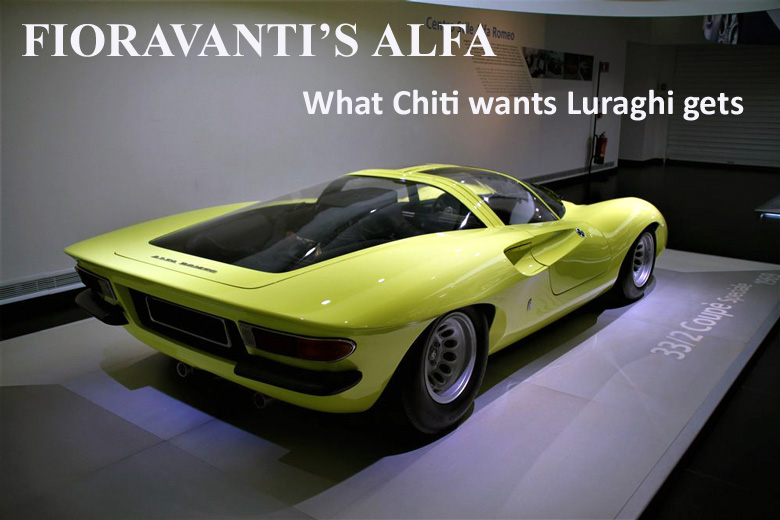
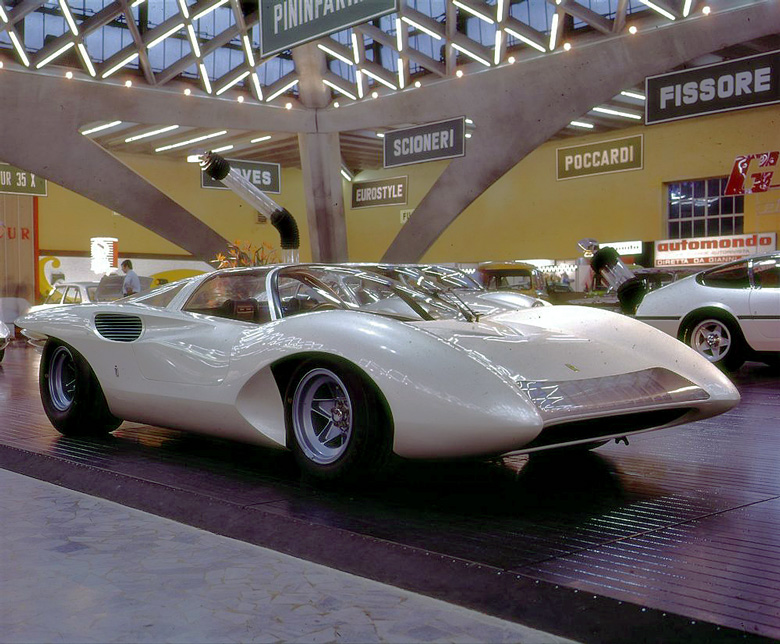
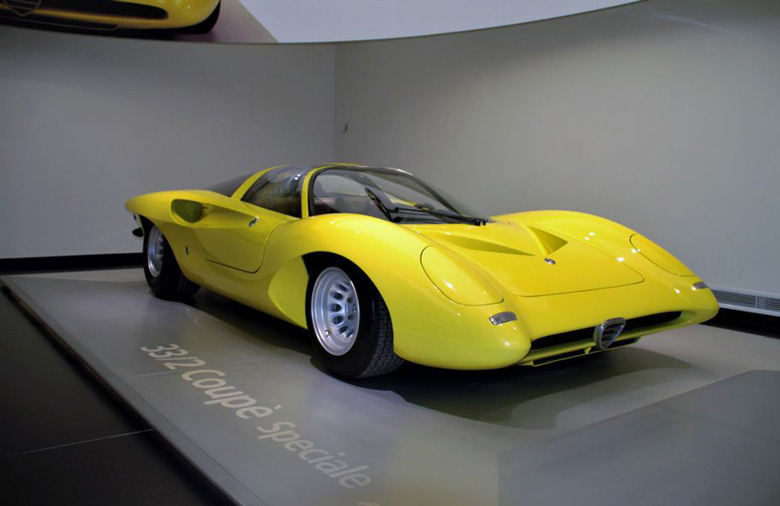
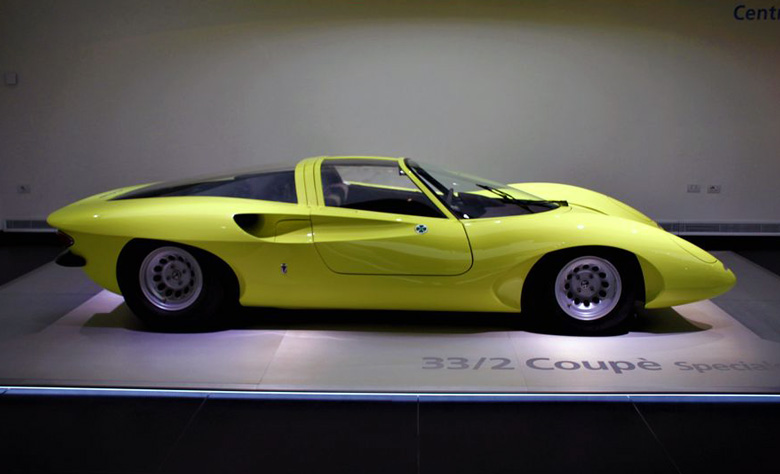
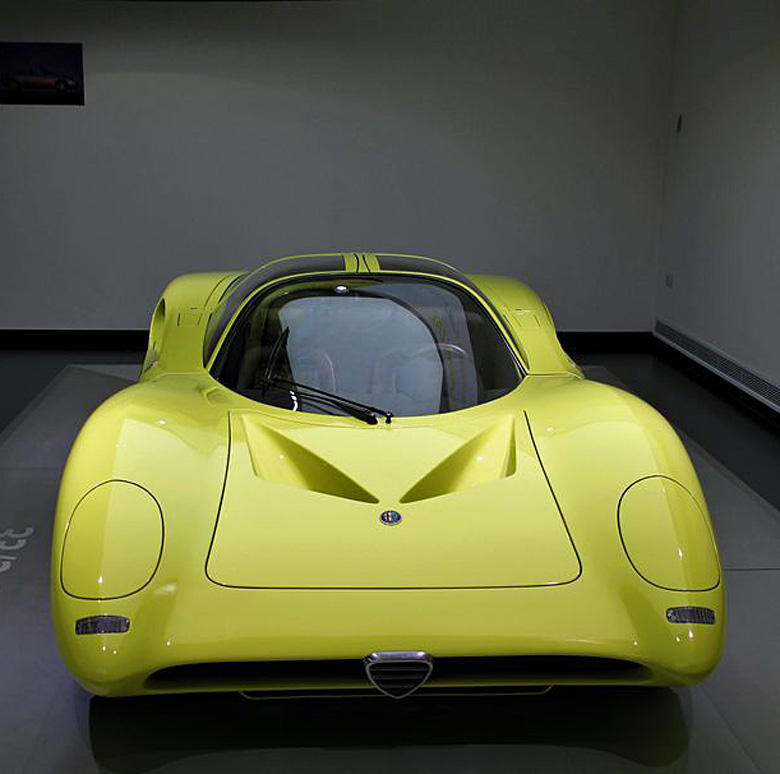
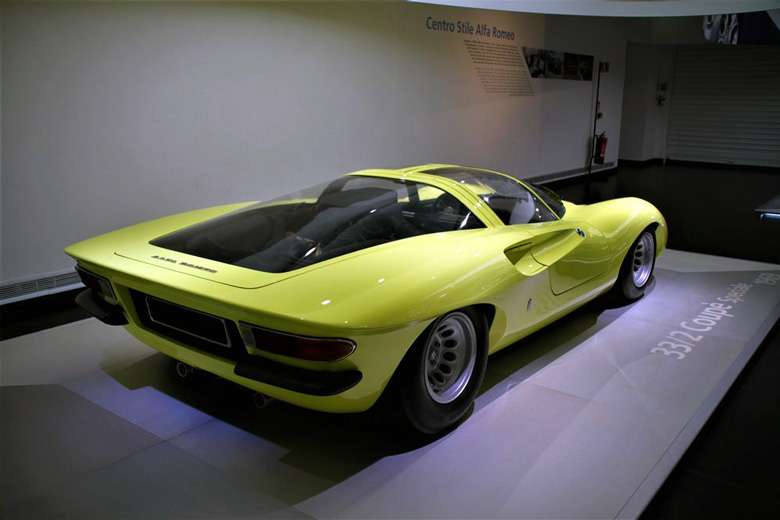
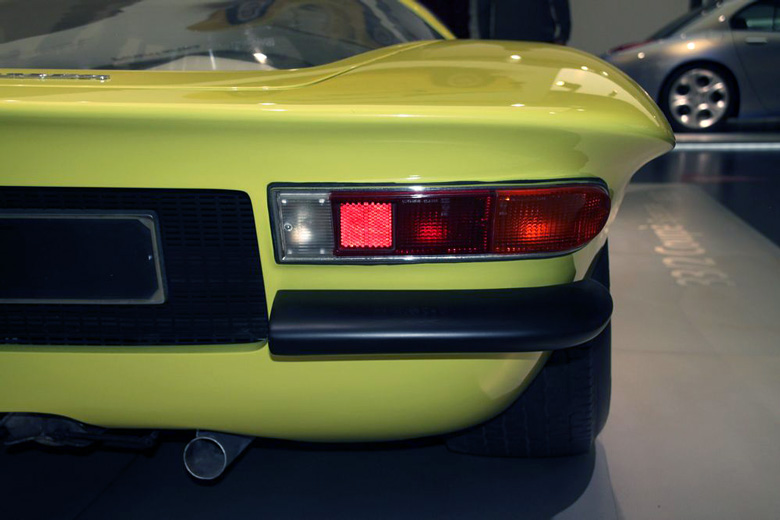
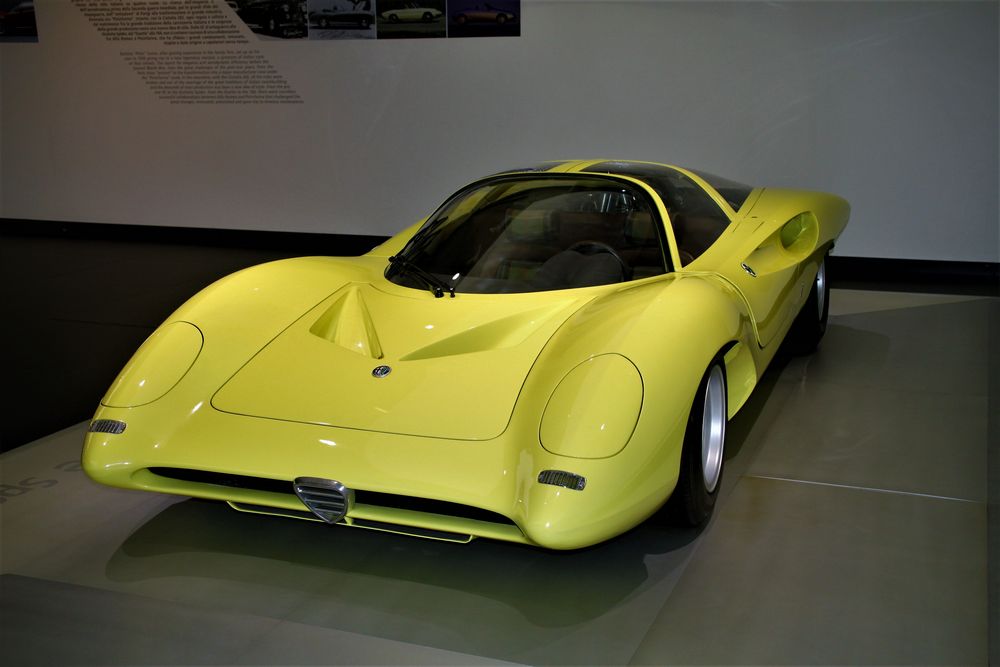
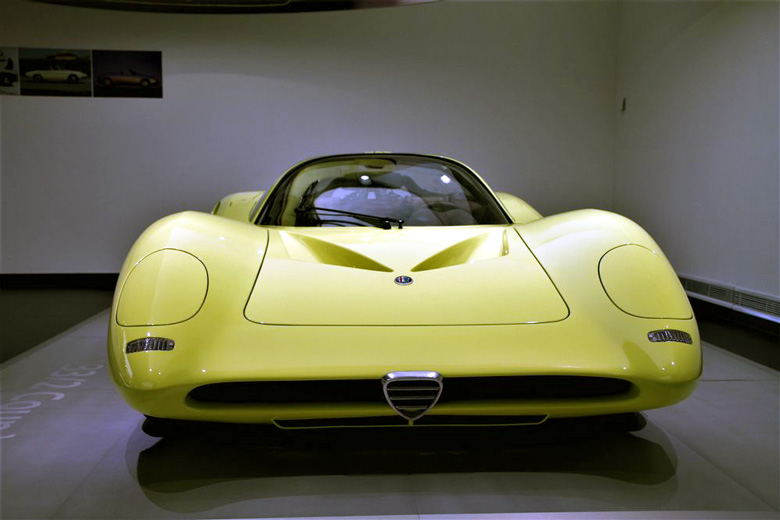
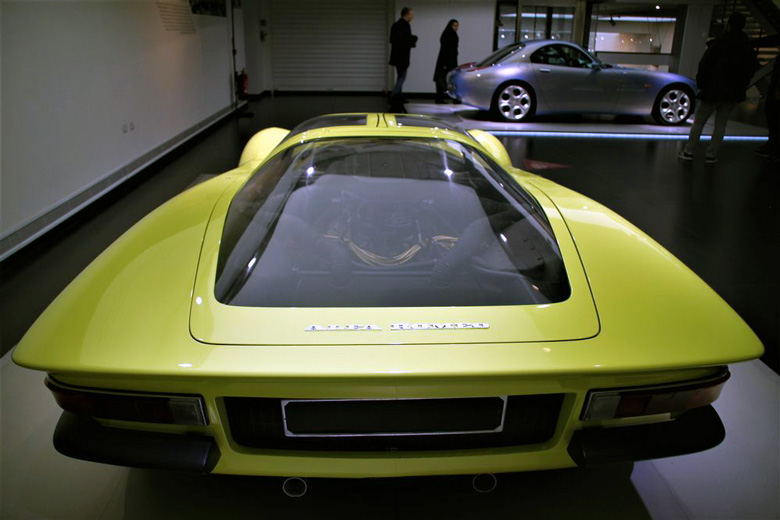
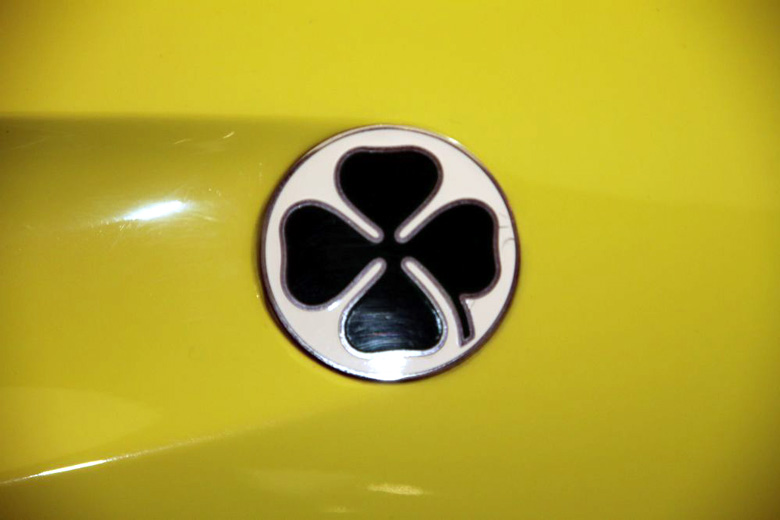
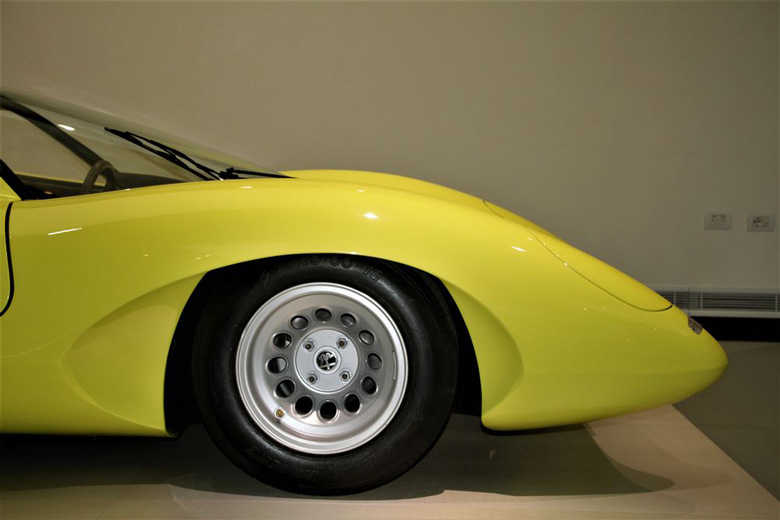
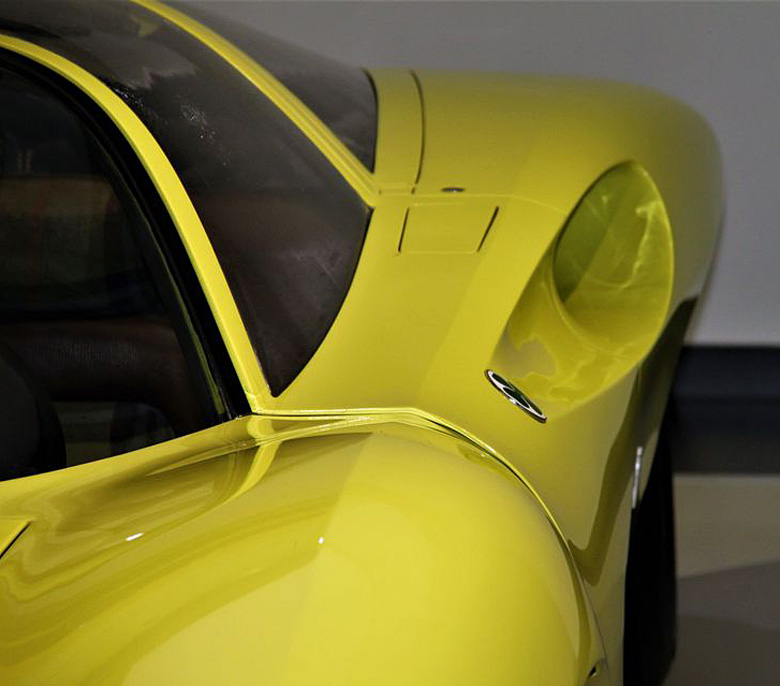
Just when you think there’s nothing new under the sun in auto styling, no other ways to do it, here’s an “old” design that looks SO hot, and IS so different from anything I’ve seen in 60 years of staring at cars. 1968!
About the same time, he designed (in seven days, he claims) the very conservative “Daytona.”
I was well aware of both cars, and often wondered how one designer got away with virtually copying the design for another manufacturer. Now it makes sense. Thanks.